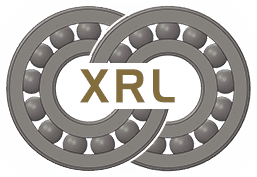When selecting the bearing type, the following five factors should be considered:
1) Direction, size and nature of the load: Radial bearings mainly bear radial loads, thrust bearings mainly receive axial loads. When the bearing is subjected to both radial and axial loads, angular contact ball bearings and tapered roller bearings can be selected. When the axial load is small, deep groove ball bearings can also be used. Generally, the bearing capacity of roller INA bearings is higher than that of ball INA bearings, and the ability to withstand impact loads is strong.
2) Speed: The working speed of the bearing should usually be lower than the limit speed n. The limit speed of deep groove ball bearings, angular contact ball bearings and cylindrical roller bearings is high, which is suitable for high-speed operation, while the limit speed of thrust bearings is low .
3) Self-aligning performance: When the coaxiality of the two bearing housing holes cannot be guaranteed or the shaft deflection is large, you should consider using spherical ball bearings or spherical roller bearings.
4) Stiffness requirements: Generally, the rigidity of roller bearings is greater than that of ball INA bearings, and angular contact ball bearings and tapered roller bearings can be pre-tensioned to further increase the rigidity of the support.
5) Support limit requirements: Fixed supports limit axial displacement in two directions. Bearings that can withstand bidirectional axial loads can be selected. One-way limits can be selected with bearings that can support unidirectional axial loads. There is no limit on floating supports. Position, can choose the cylindrical roller bearing whose inner and outer rings can be separated.
Post time: Jul-30-2021
